Globally, governments, utilities, and especially corporations are scrambling to realize sustainability commitments. There is a high demand from consumers for clean energy. One in five of the world’s largest companies has net-zero emissions goals. Fossil fuel companies like British Petroleum and Shell have similar goals as well.
Corporate buyers have the responsibility to deliver on these ambitious sustainability commitments and inevitably this involves working with renewable energy developers to procure renewable energy.
Global renewable energy development is in record-high demand. Worldwide renewable energy capacity grew by 45% in 2020 according to the International Energy Agency. That’s 280 gigawatts of added renewable energy capacity, despite the Covid-19 pandemic. The sector is undergoing an “unprecedented boom.”
The 2020s are the decisive decade in reducing greenhouse gas emissions. Solar is one of the best tools at our disposal in winning this race. The solar energy industry is vibrant, healthy, and seeing extreme growth.
Many companies are struggling to meet emissions reduction targets on schedule. There are four major obstacles to getting solar projects to commercial operations. If left unaddressed, these issues can delay critical projects. Delayed projects mean sustainability managers don’t reach their goals. Missed goals mean missed climate commitments. An organization’s reputation is at stake when commitments aren’t met.
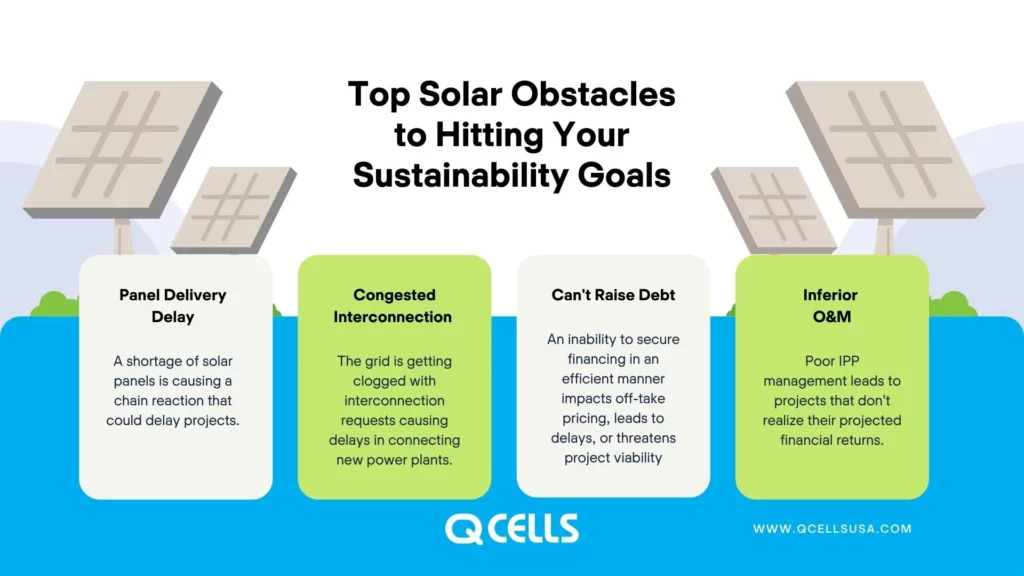
Corporate buyers looking to achieve their goals need strong development partners. This is true especially if they are achieving their goals through solar energy. These developers need to be able to overcome the major industry obstacles. I’ll explore the major hurdles facing solar project development. As well as what corporate buyers should look for in a development partner to overcome them.
Issue 1: PV module supply chain issues
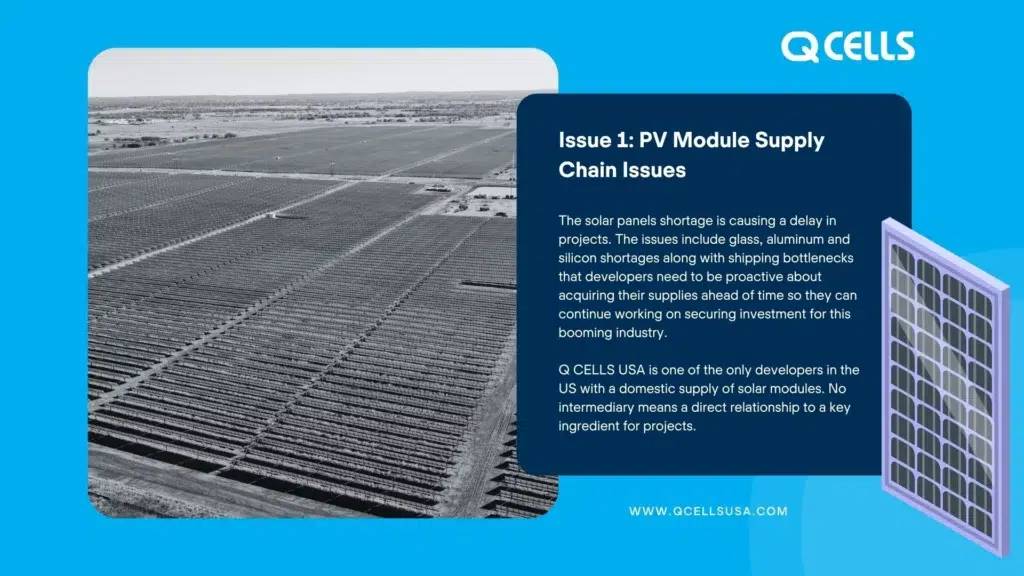
Like many industries, the solar industry is also experiencing supply chain issues. A shortage of PV panels is stalling solar power plant installations. Unfortunately, many issues plague tier 1 solar panel manufacturers: glass, aluminum, silicon shortages, and shipping bottlenecks.
One issue upstream can cause cascading impacts downstream, delaying projects. Direct relationships with solar module suppliers are key to project success. Understanding shipping and customs control delays is vital to completing PV projects. Developers need to be proactive in acquiring solar panels ahead of time.
Q CELLS USA (Q CELLS) is in a unique position as a project developer with a domestic supply of solar modules. Q CELLS has one of the largest solar panel manufacturing facilities in the western hemisphere. Located in Dalton, Georgia, the facility can produce 1.7 gigawatts of modules annually. No intermediary means a direct relationship to a key ingredient for projects.
Issue 2: Congested interconnection queues with protracted build-out schedules
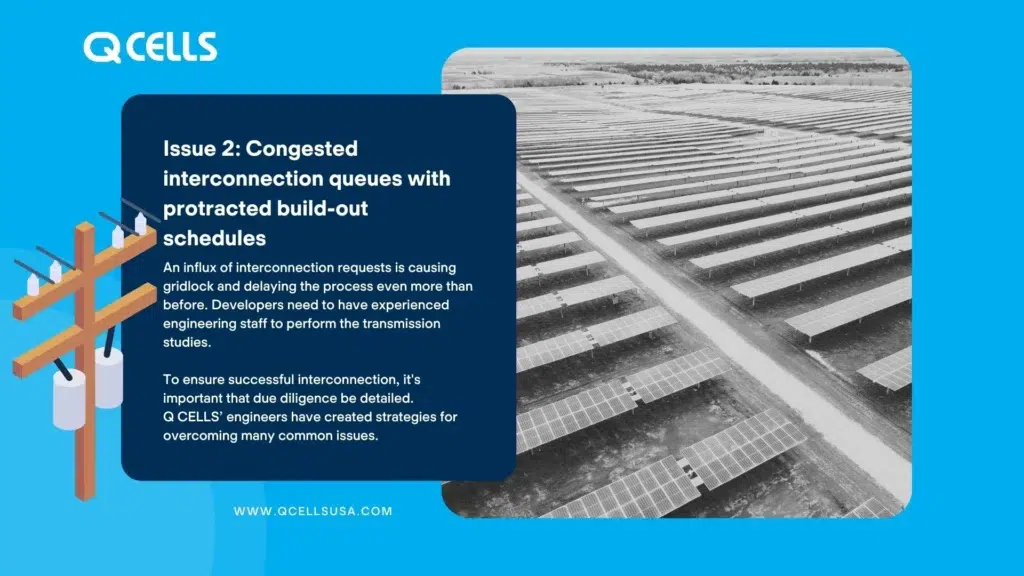
Unfortunately, the utility interconnection process is often inefficient and time-consuming. Connecting projects to the power grid is a universal challenge in energy deployment. Unfortunately, a massive influx in interconnection requests is creating gridlock and delaying deployment.
The location where a solar project connects to the grid is very important. Selecting a spot on the map without considering interconnection won’t suffice. Thorough point of interconnection (POI) due diligence is critical for projects. Developers need to have experienced engineering staff to perform the transmission studies. They must also have relationships with the utilities where the projects will connect. The interconnection process itself is rife with hurdles. Strong relationships between a developer and the incumbent utility help make the project a reality.
Comprehensive analysis helps avoid fatal flaws down the road. Detailed due diligence helps ensure successful interconnection. Q CELLS’ interconnection engineers create interconnection strategies that overcome many common issues.
Issue 3: Solar developers unable to raise debt or tax equity
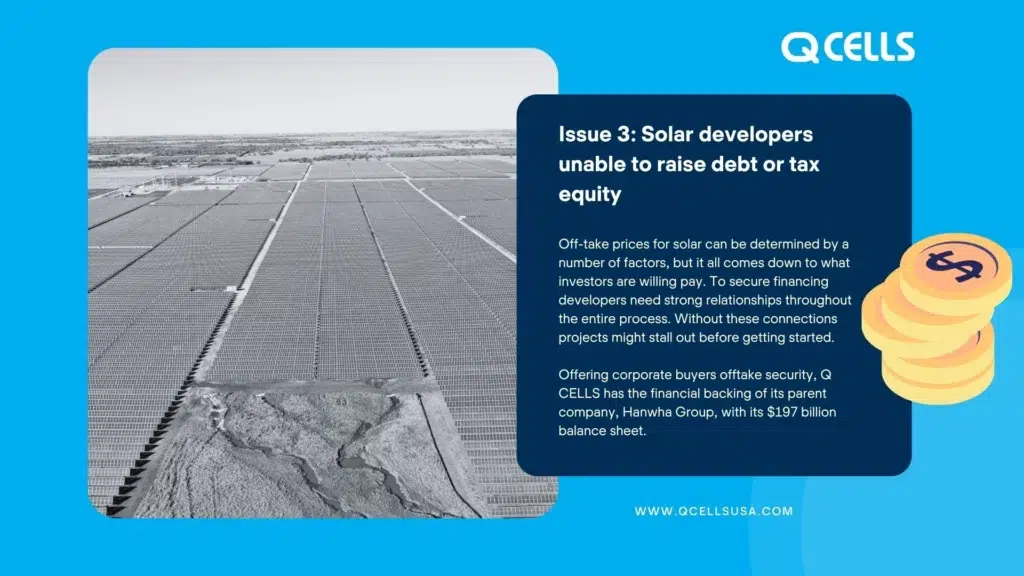
Project financing is a crucial ingredient in solar project development. Often, solar tax equity finances solar facilities. This arrangement involves matching tax equity investors with tax liability and solar projects with tax benefits. Likewise, raising debt relies on strong relationships throughout the financial industry. Without debt or tax equity, solar photovoltaic projects stall.
It is critical to use solar developers with strong financial industry relationships globally. Companies who have strong financial backing provide corporate buyers offtake security. Q CELLS parent company, Hanwha Group has a $197 billion balance sheet. This financial strength provides a bankable solution for sustainability managers.
You don’t want to miss your sustainability goal because the solar developer can’t raise debt.
Issue 4: Poor financial returns due to project underperformance

Most renewable energy developers don’t intend to own and operate their projects. Energy buyers may have solar power plants that look great only on paper. The non-operating developer has little connection the operating the project. This can lead to under designed and poorly managed solar facilities. This leads to projects that underproduce and do not realize their projected financial returns.
Securing optimal operational performance comes during the procurement and design process. Solar projects need to be well designed and matched with the best equipment. Following project design, project operations ensure a projects’ returns. Projects operating with an unreliable Independent Power Producer (IPP) won’t reach their best performance. Projects that underperform will have financial returns that suffer. A project needs a strong team throughout the entire creation of a project.
The Q CELLS team provides a full turnkey solution to ensure peak project performance. Our solar EPC, development, and IPP teams work together throughout all project phases. The Q CELLS turnkey value chain delivers projects with excellent performance.
Conclusion

Organizations with sustainability goals have a lot at stake. Failing to meet stakeholder pressure can affect their reputation. Realizing ambitious goals requires assembling the right team. Partnering with an unreliable solar developer relationship will yield poor results. Corporate buyers need to leverage partnerships to meet their goals.
Look for solar developers who are taking steps to avoid the solar industry obstacles:
- Taking steps to secure vital solar equipment for their projects
- Understand the research process required for quality utility interconnection
- Have an ability to raise project financing so that their projects don’t stall
- Perform deep system design analysis to build the best solar project. Also, they need to have a strong operations & maintenance plan in place. These two pieces work together to get a solar facility to its best performance
Meeting sustainability goals is challenging enough in itself. It doesn’t have to be more difficult by working with unsuitable solar developers. With the right partner, you can lead your organization to achieve its goals.
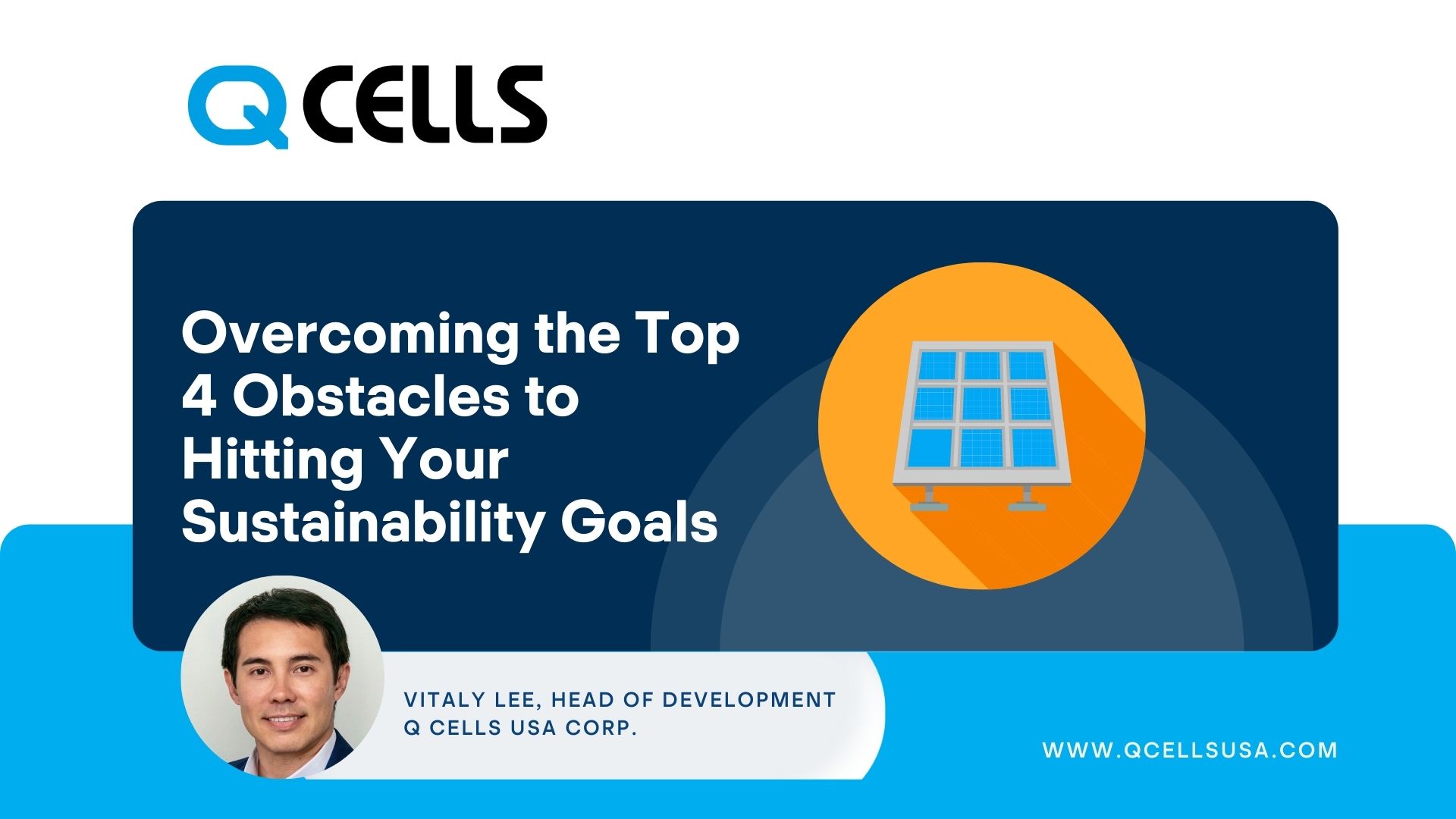
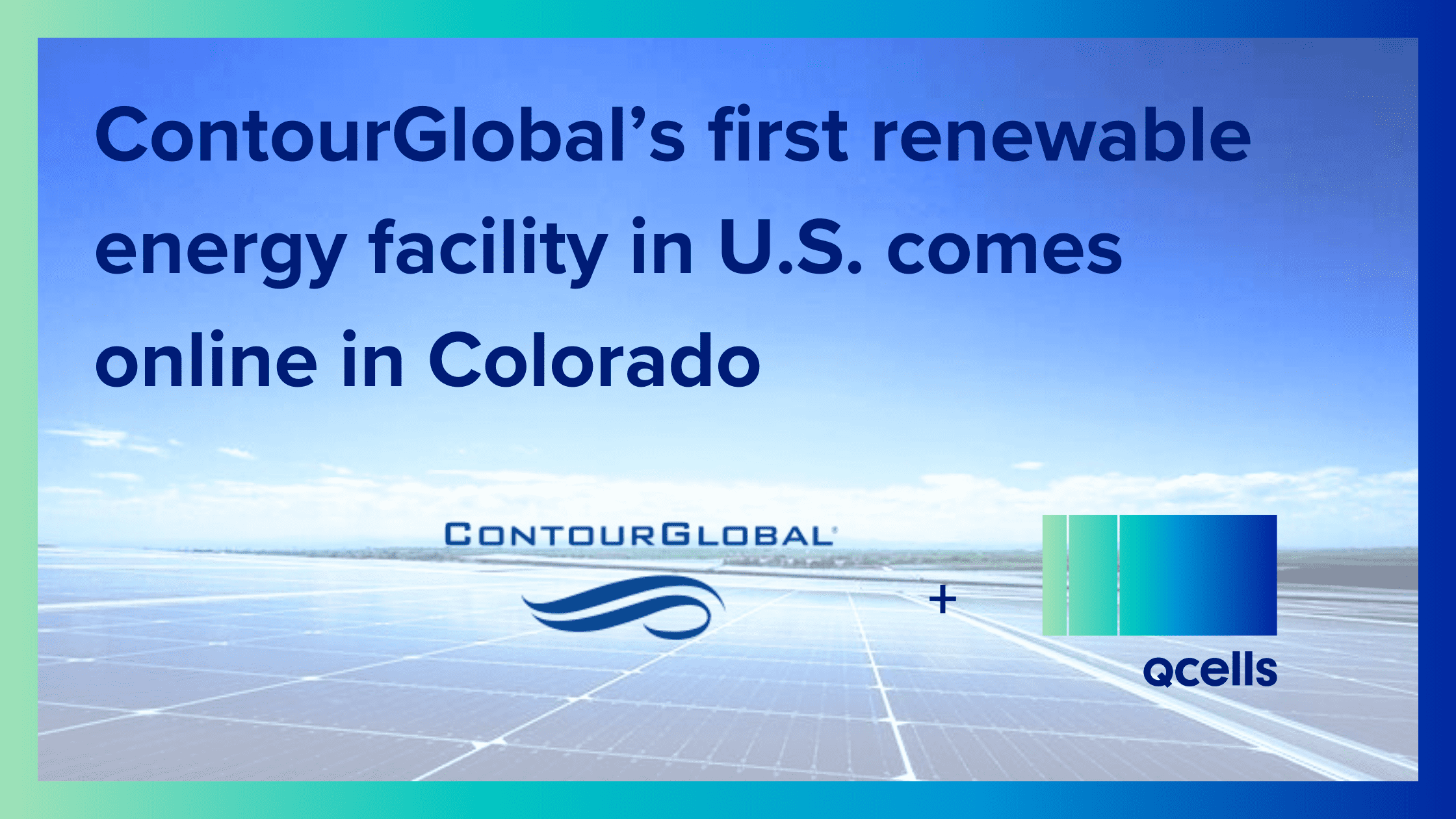
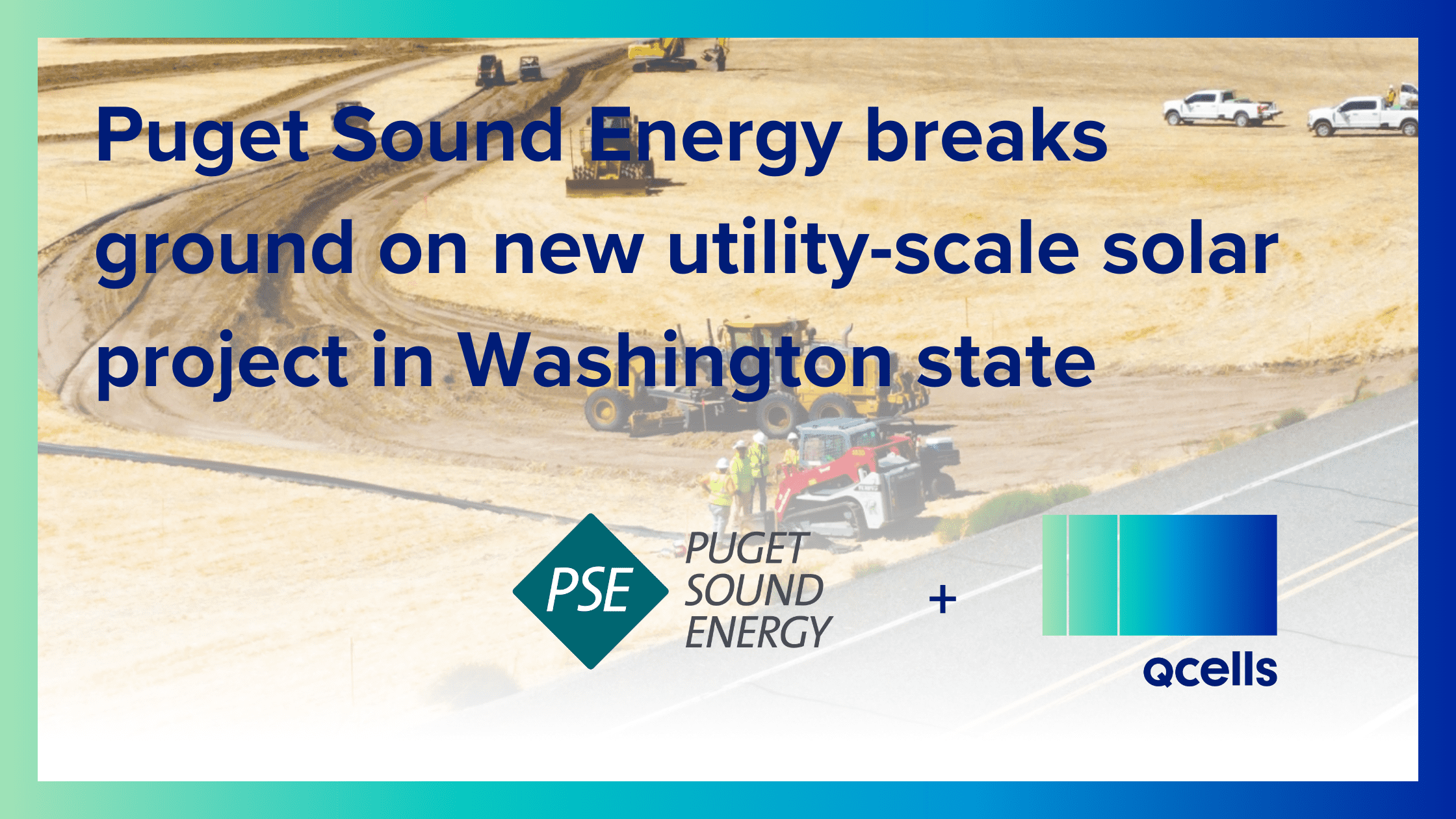
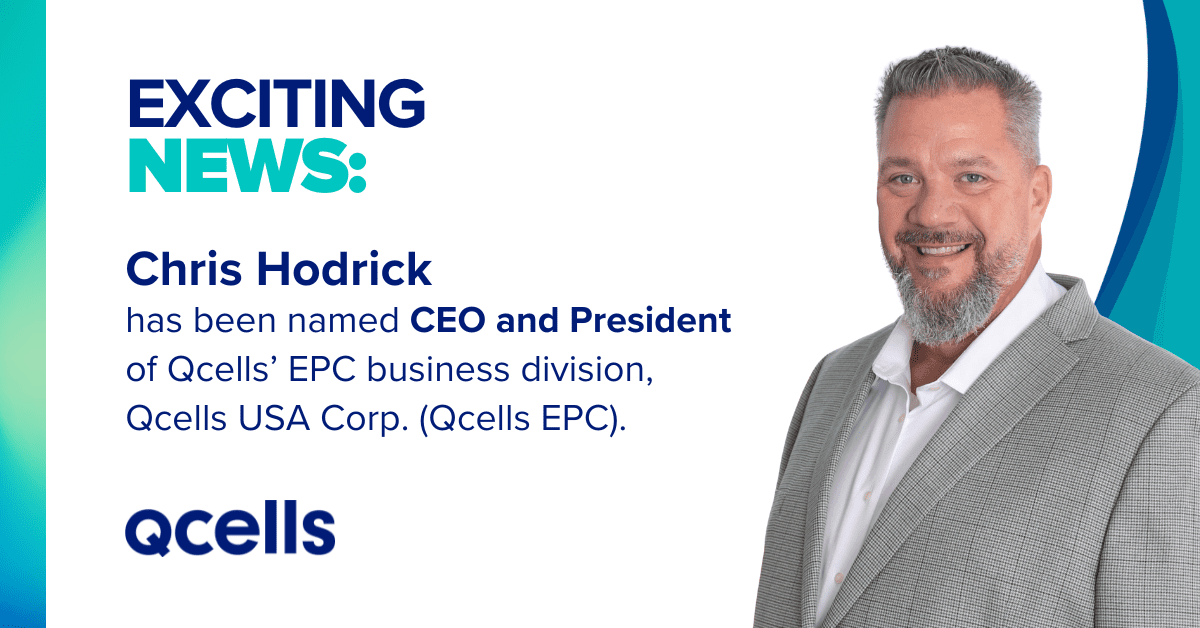
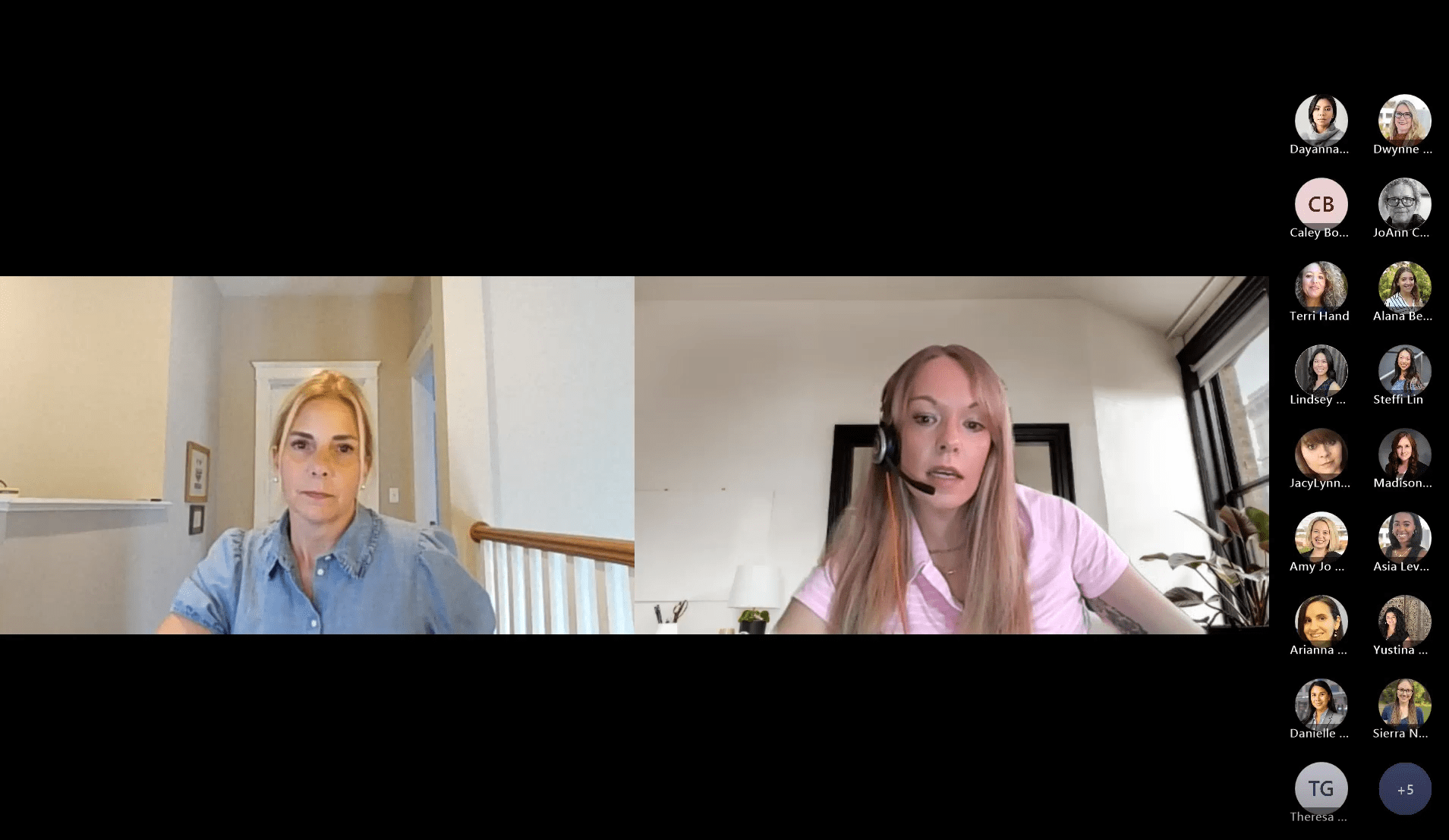
 USA & Canada
USA & Canada Korea
Korea Germany
Germany United Kingdom
United Kingdom France
France Italy
Italy Netherlands
Netherlands Greece
Greece Poland
Poland Portugal
Portugal Hungary
Hungary Spain
Spain Japan
Japan